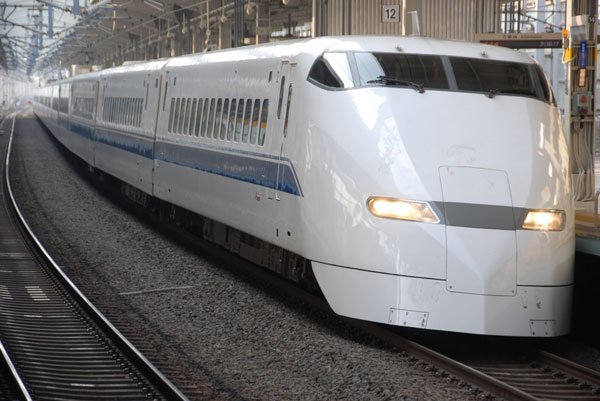Amid an emotional climate ranging from frustration, agitation,
cheers and jeers, one thing is clear: the Gilroy City Council will
consider casting a vote of no confidence against the High Speed
Rail Authority.
Amid an emotional climate ranging from frustration, agitation, cheers and jeers, one thing is clear: the Gilroy City Council will consider casting a vote of no confidence against the High Speed Rail Authority.
Monday’s high-speed rail study session was slated to be a conversation among the city council with no official actions taken. As arguments against the project became increasingly heated, Councilwoman Cat Tucker motioned the council to place the vote on the agenda for the Oct. 18 council meeting.
She was joined by councilmembers Dion Bracco, Craig Gartman and Bob Dillon in a 4-3 vote with Perry Woodward, Peter Arellano and Mayor Al Pinheiro voting against the motion.
“We’ve been waiting long enough,” Tucker said. “If we could bring a vote of no confidence back to the agenda, I would vote in favor of it.”
A vote of no confidence would show the City Council does not support HSRA policies, while causing a division in the council where one side wants to be more aggressive and the other wants to cooperate with the HSRA.
Expected to begin full operation in 2020, the $45-billion, 800-mile system is slated to have routes from Sacramento to San Diego with connections to the Bay Area and a major stop in Gilroy. The HSRA has narrowed the options for the rail line running through Gilroy. It will either be aligning with the current Union Pacific tracks and run through the downtown corridor or cut through the rural area east of U.S. 101. A combination of the two routes is also possible.
The public comments ranged from howeowners concerned about the price of their homes decreasing to others urging Gilroy to stand up to what they say is an unresponsive HSRA.
“It’s a clear message that they don’t care,” said Christine Phillips, as she stood before the council during the public comment section of the meeting. “They don’t pay attention when people say they will lose their farms.”
About 100 South County residents, upset at the lack of information being provided by HSRA representatives, showed up at council chambers and mirrored sentiments of Phillips and the other 11 public speakers that addressed the council.
They began clapping as councilmembers displayed annoyance or anger towards the HSRA, prompting Pinheiro to repeatedly tell the public to stop.
“Refrain from clapping because when it comes time for booing we don’t want any booing,” said Pinheiro, lightly tapping his gavel.
Pinheiro began the session with a briefing and a breakdown of all the meetings attended by the task force – formed a year and a half ago to deal with HSRA policies – and the letters and monetary requests sent by Gilroy and Morgan Hill to the HSRA.
But as soon as he finished, Tucker began questioning the stance of the task force, and whether they have been adequately portraying council’s interest prompting Bracco to chime in.
“They can’t just not respond to us,” he said, referring to the city’s $1 million request for a HSRA-funded consultant that hasn’t been responded to.
“Yes they can,” Pinheiro said.
“The ones that are making noise, they’re paying attention to them,” Bracco countered.
Pinheiro is a member of the task force which includes Woodward, Gilroy City Administrator Tom Haglund and Morgan Hill representatives – Councilman Greg Sellers, Mayor Steve Tate and City Manager Ed Tewes.
The task force has been lobbying for interests to Rod Diridon, who is on the HSRA board, and Sen. Joe Simitian (D-Palo Alto), who is involved in the planning.
The council was split between members and nonmembers of the task force.
The task force advocates for a more cooperative attitude towards the HSRA, warning they may be cut out of the planning process altogether if they showed too much teeth, while the other is looking to raise some dust to get the HSRA to listen.
Councilman Peter Arellano, who is not part of the task force, maintained his stance as an advocate of the high-speed rail, though he acknowledges the city has to do more to get their attention.
“If they have so much power, we have to make sure that we are there. We’re just a little drop in the bucket, but we have to be that drop that keeps pushing and pushing and pushing,” he said. “I was one that voted for this high-speed rail and I still believe in it,” he said. “Is it gonna be smooth and without problems? No, but we need to be at the table.”
Councilman Woodward warned an aggressive stance may get Gilroy out of the bucket altogether.
“We cant just hold our breath and make it go away, but I don’t think that’s the right approach,” he said. “It’s the emotionally satisfying approach but its not the appropriate thing to do. It’s premature to use all our ammunition at once.”
Morgan Hill Mayor Tate, who was at the meeting, said he remains cautious.
“We’re starting to hear that cities are getting cut out and the last thing we have to do is get cut out,” he said. “In spite of sharing all those concerns, we can’t react madly.”
In her turn behind the podium, Sylvia Hamilton said she believed the vote of no confidence would not necessarily mean Gilroy is out of the loop.
“That doesn’t mean you can’t keep working with them,” she said.
Tucker pressed on for a vote of no confidence saying the HSRA is being elusive.
She said the HSRA told the council to wait for the next environmental review – the project level Environmental Impact Report — for a response to most of the council’s questions instead of responding promptly to its concerns.
The council’s questions included the report’s findings of ridership estimates requiring 6,600 parking spaces in Gilroy.
Gartman agreed.
“They will tell you what you want to hear every single time, but the short facts are that it’s too expensive, it’s too large and the third and last one is that they lied. We should pass a resolution that nobody wants this train and if we have to turn into the state’s biggest SOBs, I’m ready to do it,” he said.














